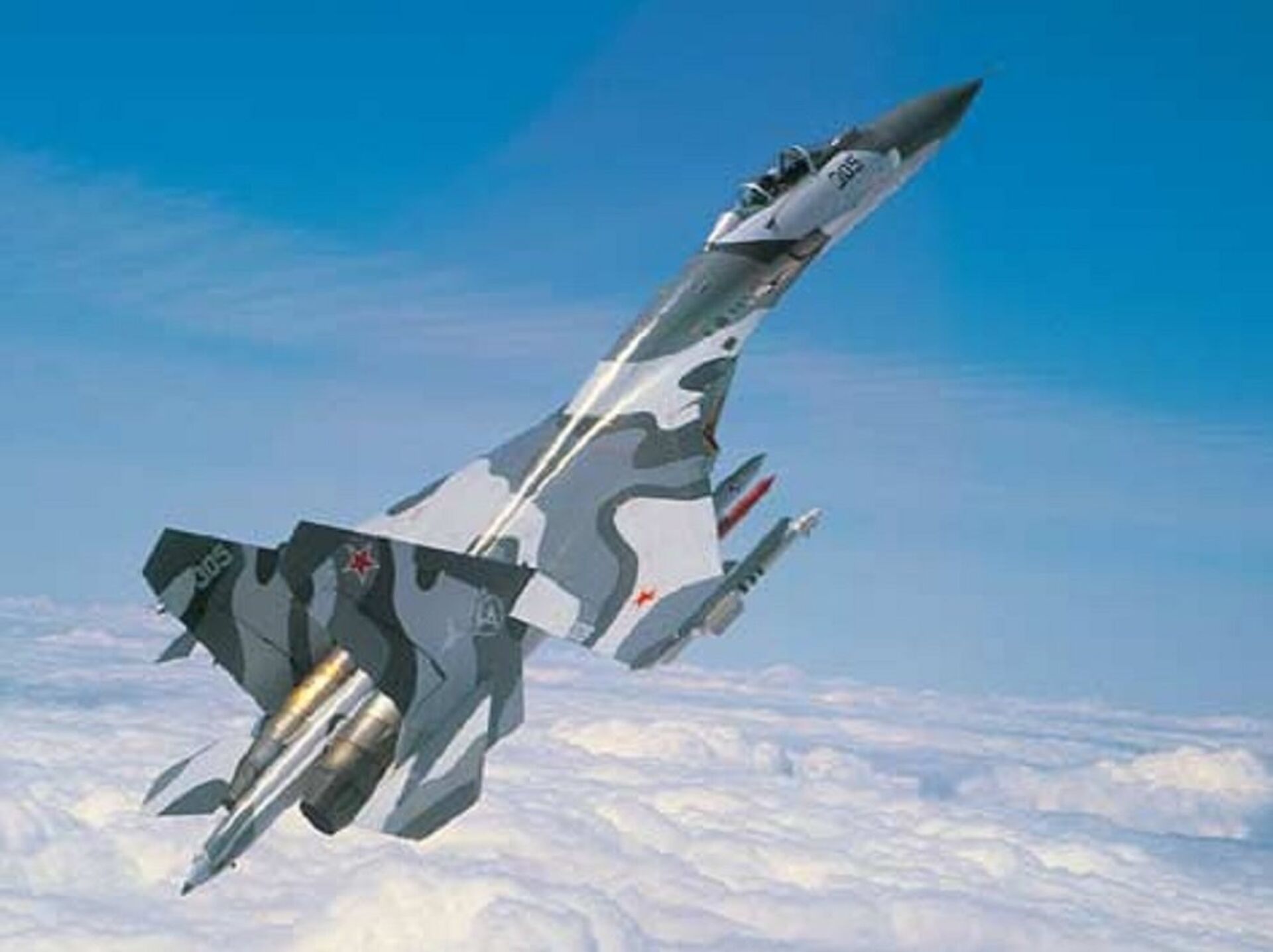Fathers and Sons: The Expansive Family of Sukhoi’s Su-27 ‘Flanker’ Fighter Jets
23:17 GMT 19.12.2022 (Updated: 18:28 GMT 16.01.2023)

© Photo : sukhoi.org
Subscribe
Longread
The design bureau founded by Pavel Sukhoi in 1939 has turned out some of the most legendary fighter aircraft of the 20th century, providing the backbone of Soviet air forces through the Cold War and Russian air forces after. Arguably its most successful design has been the Su-27, intended to be the terror of every NATO pilot.
As with many aircraft of the late 20th century, the story of the Su-27 begins in the skies over Vietnam.
Advanced Frontline Fighter’
During the US invasion of Vietnam from 1965 to 1973, Soviet-built and American-built aircraft faced off in epic battles that revealed the weaknesses and strengths of many of the fast-evolving technologies, including radars, missiles, bomber tactics, Suppression of Enemy Air Defenses (SEAD), and the continued relevance of dogfighting tactics. Out of that conflict, both the Americans and the Soviets drew conclusions about what the next generation of interceptors and bombers should look like - and what their adversaries were capable of producing.
The Americans, whose F-4 and F-105 fighters were heavily outclassed by supposedly “obsolete” Soviet technology, embarked on a highly ambitious project to develop a fast, long-range, dedicated and capable air superiority aircraft, which became the McDonnell Douglas F-15 Eagle. When the Soviet learned of this program and its goals, they set out to develop a competitor aircraft, one capable of meeting the F-15 in skies far from home - and winning.
The order went out in 1969 for an “advanced frontline fighter,” but after designers realized the program was too ambitious for just one aircraft, its tasks were split into two jets: the Mikoyan-Guyevich MiG-29 became the shorter-range dogfighter, and Sukhoi built the long-range air superiority fighter that became the Su-27.
Su-27 (NATO Reporting Name ‘Flanker’)
The first Su-27s entered service with the Soviet Air Force in 1985, two years after the MiG-29 (NATO reporting name ‘Fulcrum’), although production issues kept it from being deployed in large numbers before 1990.
The new aircraft was impressive, with a 2,190-mile range, maximum speed of Mach 2.35, and an impressive weapons loadout of up to 12 air-to-air missiles. Its large size, at 71 feet in length and 48-foot wingspan, reflected these capabilities. It would use them to hunt down American B-52 and B-1B bombers at long range, as well as to escort Soviet bombers and engage NATO interceptors.
Even before it was fitted with thrust-vectoring capability in later models, the Su-27 was capable of performing the visually impressive cobra maneuver. A notable design feature on all Su-27 derivatives is the “stinger” between its twin engines: the protrusion houses defenses countermeasures such as chaff and flares, a drag parachute, a fuel jettison outlet, and in some models, a rear-facing radar. It also provides an additional lifting surface.
In the decades since it was introduced, about 680 Su-27s have been built at the Komsomolsk-on-Amur Aircraft Production Association (KnAAPO) and Novosibirsk Aircraft Production Association Plant (NAPO) factories, and the jet has been modified into dozens of different variants, filling a wide variety of roles from surface strike to maritime patrol, foreign export, and technology demonstrator. Some of these have been spun off into completely new aircraft, together comprising the “family” of Su-27s.
Su-30 (NATO Reporting Name ‘Flanker C/G/H’)
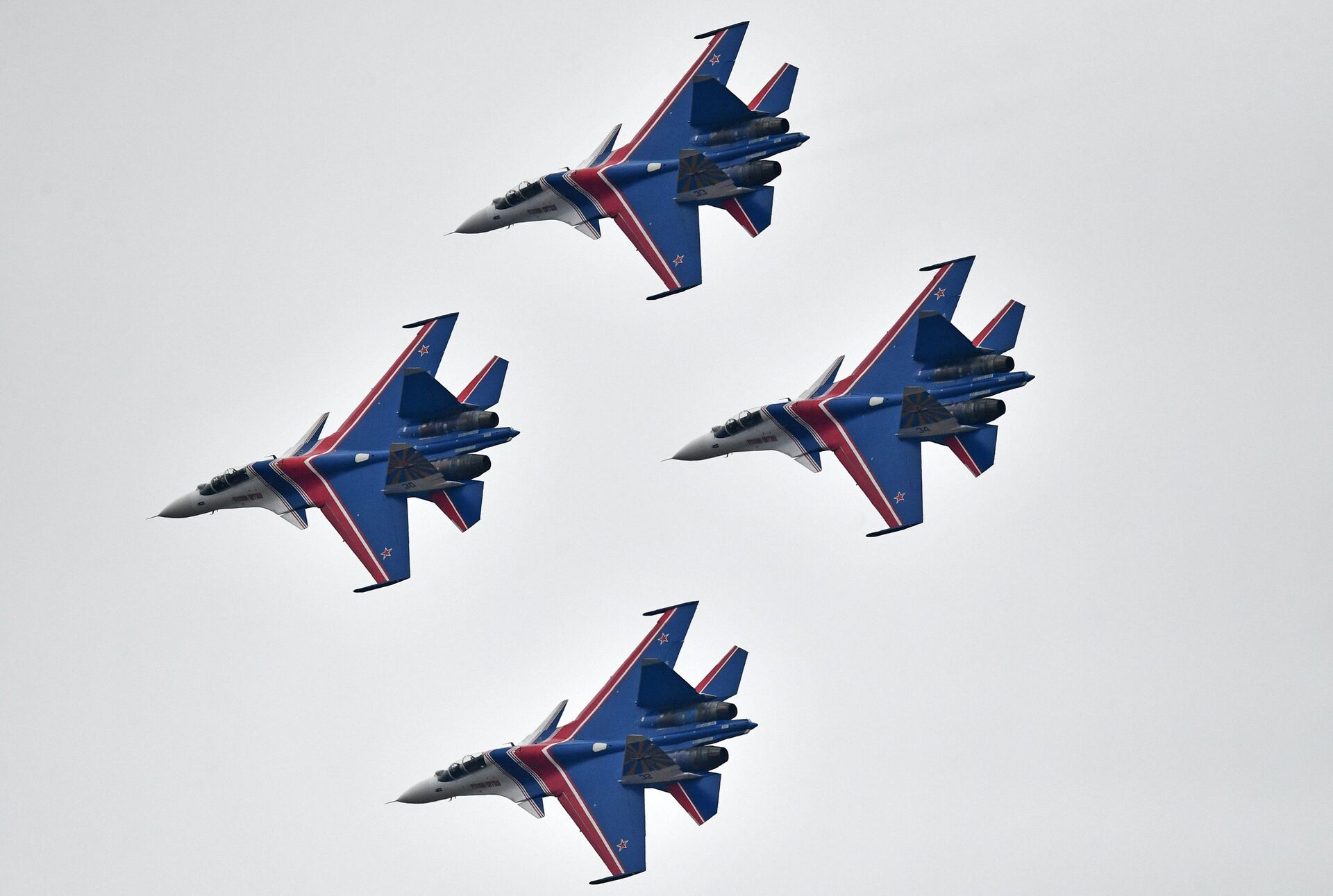
Su-30SM multipurpose fighter jets of the Russian Knights aerobatic display team during a rehearsal of the Victory Day parade air show.
© Sputnik / Maksim Blinov
/ The Su-30 is broadly analogous to the F-15E Strike Eagle, the Su-30 is an Su-27 modified to perform surface strike operations and air defense missions. As a result, the new aircraft has a greater range than the Su-27’s already-impressive combat radius, a second pilot, and a terrain-following radar to help it perform low-altitude strike runs. The first Su-30s were ordered by the Russian Defense Ministry in 1994.
Subsequent modified variants, such as the Su-30MKK, were developed for export to Indonesia, Venezuela, Vietnam, and China, among other buyers. About 630 Su-30s have been built. The Russian Knights aerobatic demonstration team of the Russian Air Force uses the Su-30SM, having originally flown Su-27s.
Su-33 ‘Flanker-D’

This Sukhoi Su-33 Flanker warplane was displayed at the fourth MAKS-1999 aerospace show in the town of Zhukovsky outside Moscow. (File)
© Sputnik / Vladimir Vyatkin
/ The Su-33 is Russia’s carrier-borne fighter aircraft, flying from the aircraft carrier Admiral Kuznetsov.
The Soviet Union made numerous attempts to develop a large carrier capability comparable to the US Navy’s, although naval aviation never received the kind of dedicated attention in Moscow that it did in Washington. For years, Soviet “aviation cruisers” combined a limited flight deck for vertical takeoff-capable aircraft with mounts for ship-based missile capabilities, leaving no room for fixed-wing aircraft, save the underpowered Yakovlev Yak-38 and its underwhelming intended replacement, the Yak-141.
The warships today known as the Kuznetsov-class carriers were intended to change that. With its missiles concealed beneath a dedicated flight deck, the Kuznetsov could finally accommodate fixed-wing fighters, and Soviet designers began adapting the Su-27 almost as soon as it entered regular service.
The first Su-27K, as it was known at the time, began tests in 1987, and the first production aircraft rolled out in 1990. However, just 35 have been built - enough to fill the hangar of the Admiral Kuznetsov, which became the Russian Federation’s only aircraft carrier. Its sister ship, the Varyag, was bought incomplete from Ukraine by China, which completed it in the Dalian shipyard in 2012 and rechristened it Liaoning.
The Su-33 has struggled to measure up to the other members of the Flanker family, due to the constraints placed upon carrier-borne aircraft. Its massive size was not entirely suitable to the confined environs of a flight deck, and it cannot carry the full weapons loadout of its land-based cousins. The Chinese equivalent, the J-15, has suffered the same constraints. However, the most recent updates to the Su-33 have made it broadly equivalent to the Su-30SM.
Su-34 ‘Fullback’
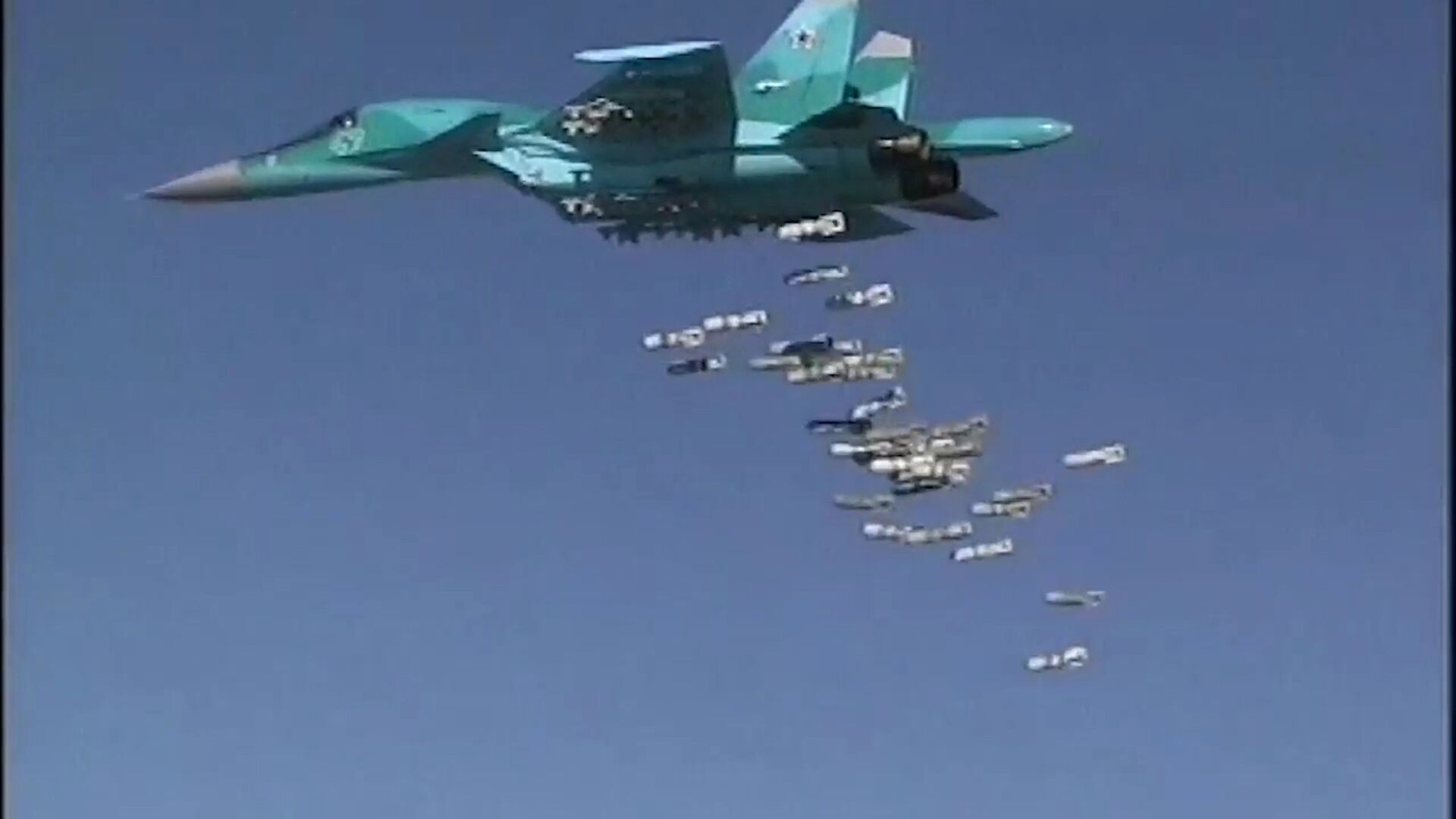
Russia's Sukhoi Su-34 Fullback tactical bombers strike ISIS sites in Syria
© Ministry of defence of the Russian Federation
/ The Su-34 grew out of a desire to replace the Su-24 (NATO reporting name “Fencer”) naval strike aircraft after Soviet designers realized any replacement would also have to be able to stand up to the F-15 and F-16, another advanced new American interceptor. The Su-27 proved an excellent platform for the new aircraft, which first flew in 1990.
The new jet was likely intended to land on aircraft carriers, but with the cancellation of the supercarrier Ulyanovsk and the dissolution of the Soviet Union, its role evolved. It did not enter full production until 2008. The new aircraft still featured the side-by-side seating of two pilots like the Su-24 had, as well as an armored cockpit and room for crew to stand up, lie down, and move around during very long missions. The Su-27’s “stinger” was extended and a rear-facing radar added, to give the Su-34 additional awareness. It is also fitted with an advanced AESA radar with terrain-following capability.
Su-35 ‘Flanker-E’
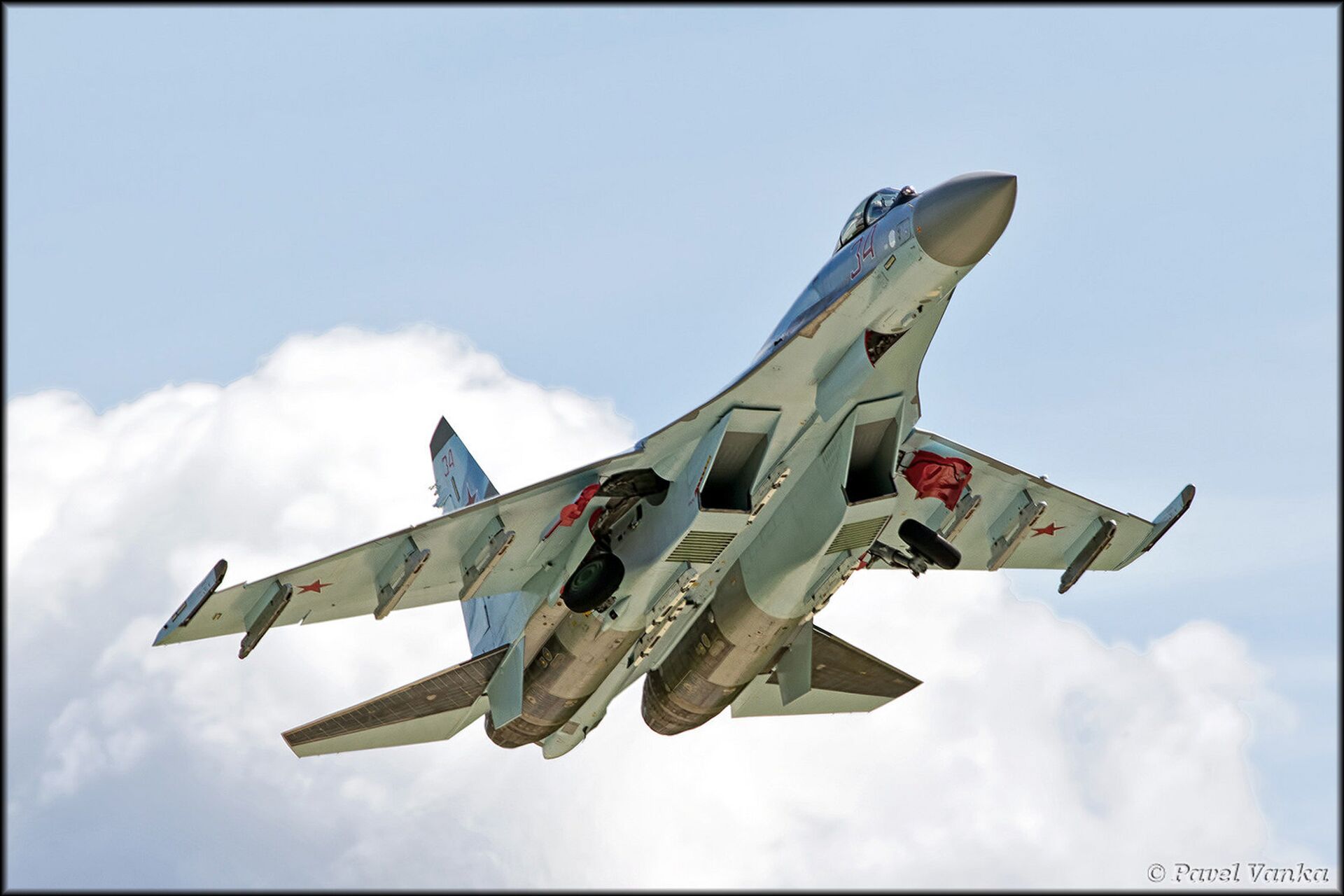
Sukhoi Su-35S
© Flickr / Pavel Vanka
The Su-35 has been dubbed “the last Flanker,” despite it being one of the earliest updates to the Su-27. The addition of canards, or small wings ahead of the main wings, was incorporated into many subsequent Su-27 family designs thanks to the increased maneuverability they offer. The Su-35 has a vastly more powerful forward-facing radar than the original Su-27, capable of tracking 15 targets over the horizon and engaging six of them, and was the first to incorporate the rear-facing radar in its “stinger” that was later used in the Su-34.
Still, just over 160 were built, mainly for export, and the platform for years served as a technology demonstrator, although the Russian Air Forces have used several Su-35s up to the present.
Su-37 'Terminator'

The sole Sukhoi Su-37 'Flanker' technology demonstrator ever built
Only a single Su-37 was built in 1996 in order to demonstrate advanced new technologies, such as thrust-vectoring, which would be incorporated into new Sukhoi aircraft like the Su-57. The SU-37 crashed during a demonstration in 2002.
Its informal nickname of “Terminator” is believed to have come from Sukhoi designers inspired by its many new electronic features.
Su-47 'Berkut'
![Sukhoi Su-47 Berkut [Golden Eagle] fighter and experimental flying laboratory Sukhoi Su-47 Berkut [Golden Eagle] fighter and experimental flying laboratory - Sputnik International, 1920, 19.12.2022](https://cdn1.img.sputnikglobe.com/img/106486/05/1064860543_0:0:2836:2048_1920x0_80_0_0_da3f885b0c2eba2d6481a7e0db08a060.jpg)
Sukhoi Su-47 Berkut [Golden Eagle] fighter and experimental flying laboratory
© Sputnik / Pashkovskiy
/ Another technology demonstrator, the Su-47 ‘Berkut’ (Golden Eagle) is immediately identifiable for its unorthodox forward-swept wings and black paint job. Like the Su-37, the Su-47 was a technology testbed built in 1997, and although its design was much more radical than the Su-37, its airframe incorporated many parts of the Su-27, such as the forward fuselage, vertical tails, and landing gear, making it a sort of estranged cousin of the Su-27.
For a time, it was speculated that the Su-47 would become Russia’s next-generation fighter - a role it was in fact never considered for, and which has since been filled by the Su-57 fifth-generation aircraft.
Shenyang J-11 'Flanker-B'

A J-11BS fighter jet attached to an aviation brigade of the Chinese air force (PLAAF) under the PLA Northern Theater Command takes off for a combat sortie during a flight training exercise on January 3, 2017.
CC0 / /
In 1992, the People’s Republic of China obtained a license to build Su-27s for the People’s Liberation Army Air Force (PLAAF), providing China with a fighter jet light-years ahead of its air fleet at the time. The license-built Su-27 was dubbed the J-11 by Shenyang, but still referred to as “Flanker-B” by NATO observers. China bought 78 Su-27s for this purpose, and had built 440 of them as of 2019, making them the PLAAF’s mainstay air superiority aircraft.
Like in Russia, China then developed the Su-27 into several other platforms to fill other roles, and heavily upgraded the J-11 to keep its technology on the cutting edge. The J-11B “Flaming Dragon” was developed as a way to end its dependency on Russian support by replacing Russian systems with Chinese ones
J-15 'Flying Shark'
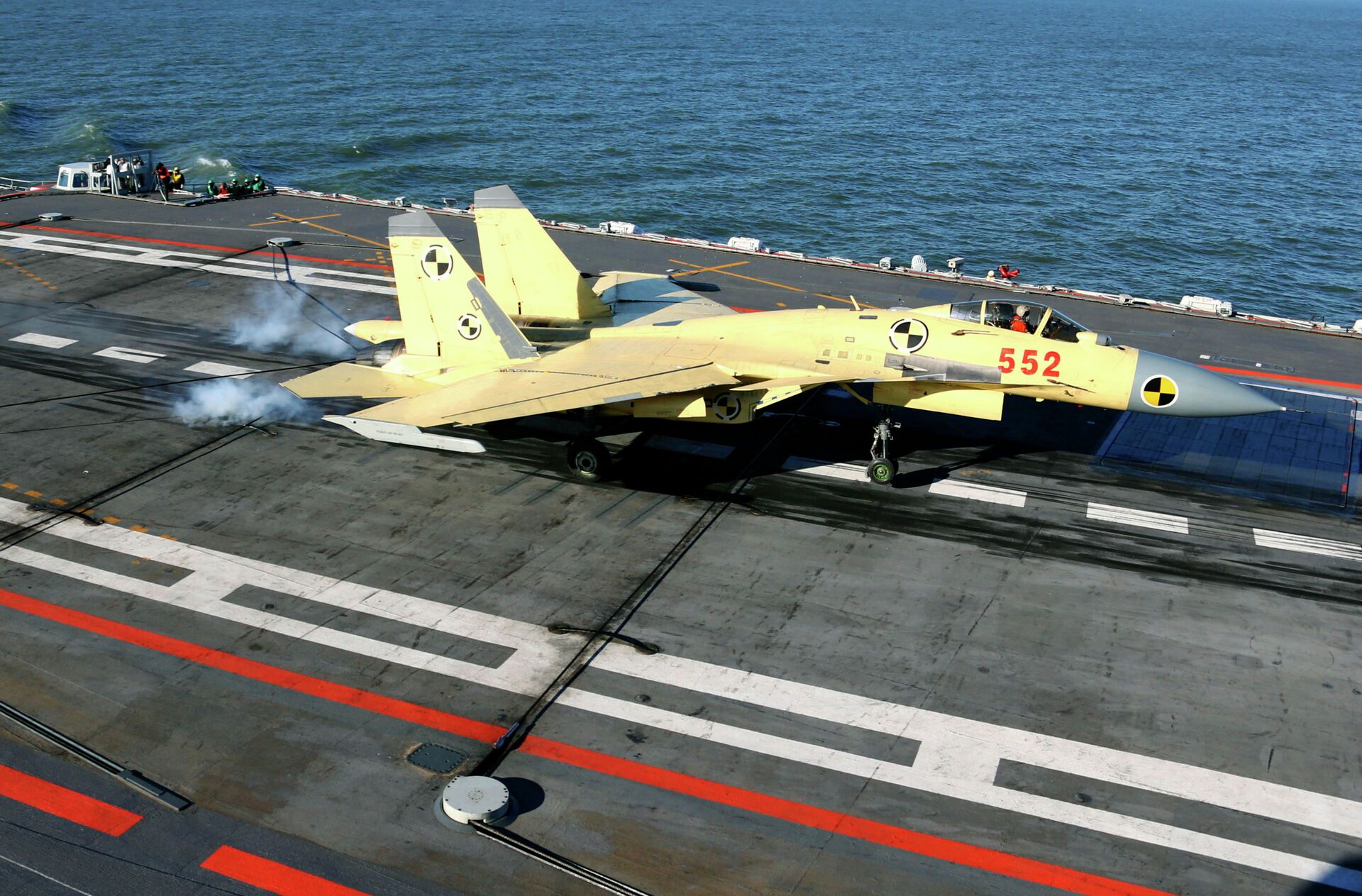
In this undated photo released by China's Xinhua News Agency, a carrier-borne J-15 fighter jet lands on China's first aircraft carrier, the Liaoning
© AP Photo / Xinhua, Zha Chunming
Despite its similarity to the J-11, the J-15 comes from a different line of the Su-27 family. Dubbed the “Flying Shark,” the J-15 is China’s only fixed-wing carrier-borne fighter. It was developed from the unfinished Soviet-era test aircraft, the T-10K-3, from which the Su-33 carrier-based fighter was derived for Soviet and later Russian aircraft carriers. Shenyang Aircraft Corporation bought the testbed from Ukraine in 2001, reverse-engineered it, and incorporated indigenous Chinese technologies first developed for the J-11B.
The new aircraft entered service in 2013, but just 50 have been built.
J-16
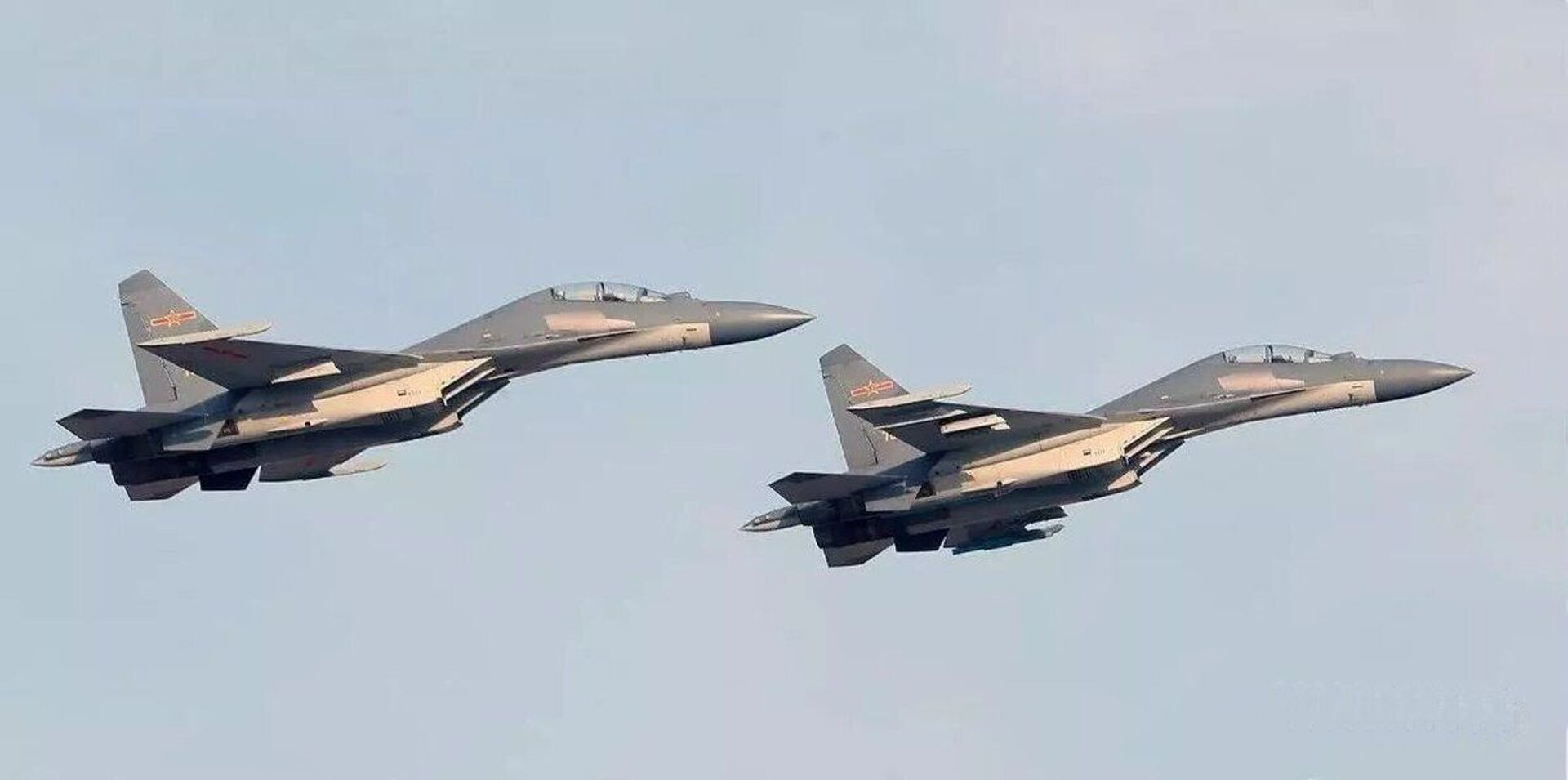
Two Chengdu J-16 Fighters of China's People's Liberation Army Air Force (PLAAF)
© Chinese Ministry of National Defense
The J-16 is the newest of the Su-27 family, being introduced to the PLAAF in 2015 as a dedicated strike aircraft based on the J-11BS. The aircraft has a powerful new radar, a reduced radar-cross section thanks to special paint, and is made of lighter composite materials than the J-11. It is specialized for electronic warfare, SEAD, and a bevy of deadly anti-ship missiles. About 245 have been built for the PLAAF.

